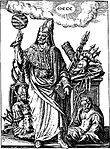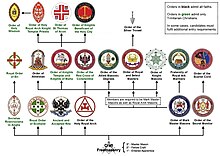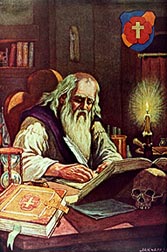
Freemasonry or Masonry refers to fraternal organisations that trace their descent from the guilds of stonemasons that, from the end of the 14th century, regulated the qualifications of stonemasons and their interaction with authorities and clients. Modern Freemasonry broadly consists of two main recognition groups: Regular Freemasonry, which insists that a volume of scripture be open in a working lodge, that every member professes belief in a Supreme Being, that no women be admitted, and that the discussion of religion and politics do not take place within the lodge; and Continental Freemasonry, which consists of the jurisdictions that have removed some, or all, of these restrictions.

The Hermetic Order of the Golden Dawn, more commonly the Golden Dawn, was a secret society devoted to the study and practice of occult Hermeticism and metaphysics during the late 19th and early 20th centuries. Known as a magical order, the Hermetic Order of the Golden Dawn was active in Great Britain and focused its practices on theurgy and spiritual development. Many present-day concepts of ritual and magic that are at the centre of contemporary traditions, such as Wicca and Thelema, were inspired by the Golden Dawn, which became one of the largest single influences on 20th-century Western occultism.

Rosicrucianism is a spiritual and cultural movement that arose in Europe in the early 17th century after the publication of several texts announcing to the world a new esoteric order. Rosicrucianism is symbolized by the Rosy Cross or Rose Cross.

Arthur Edward Waite was a British poet and scholarly mystic who wrote extensively on occult and esoteric matters, and was the co-creator of the Rider–Waite tarot deck. As his biographer R. A. Gilbert described him, "Waite's name has survived because he was the first to attempt a systematic study of the history of Western occultism—viewed as a spiritual tradition rather than as aspects of protoscience or as the pathology of religion."

The Societas Rosicruciana is a Rosicrucian order which limits its membership to Christian Master Masons. The order was founded in Scotland, but now exists in Scotland, England, Canada, Portugal, and the United States. While a prospective member must be a Trinitarian Christian Master Mason in good standing with a Grand Lodge that is recognized by the Grand Lodge of the jurisdiction in which the Society meets, the various Societies have no other Masonic links, ties, or official recognition. Additionally, in some jurisdictions, membership is by invitation only. As the Society offers assistance to all its members in working out the great problems of nature and science, it functions in some respects as a research society.

William Wynn Westcott was a coroner, ceremonial magician, theosophist and Freemason born in Leamington, Warwickshire, England. He was a Supreme Magus (chief) of the S.R.I.A and went on to co-found the Golden Dawn.

The Rose Cross is a symbol largely associated with the legendary Christian Rosenkreuz; Christian Kabbalist, alchemist, and founder of the Rosicrucian Order. The Rose Cross is a cross with a rose at its centre, often red, golden or white and symbolizes the teachings of a Western esoteric tradition with Christian tenets.
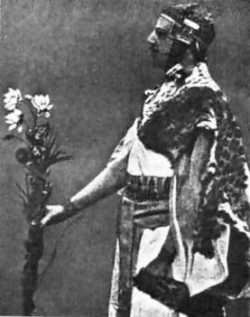
Samuel Liddell MacGregor Mathers, born Samuel Liddell Mathers, was a British occultist and member of the S.R.I.A.. He is primarily known as one of the founders of the Hermetic Order of the Golden Dawn, a ceremonial magic order of which offshoots still exist. He became so synonymous with the order that Golden Dawn scholar Israel Regardie observed in retrospect that "the Golden Dawn was MacGregor Mathers."
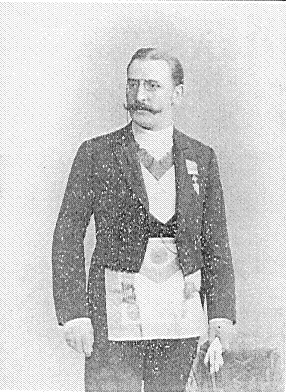
Albert Karl Theodor Reuss also known by his neo-Gnostic bishop title of Carolus Albertus Theodorus Peregrinus was a German tantric occultist, freemason, journalist, singer and head of Ordo Templi Orientis.
The Cipher Manuscripts are a collection of 60 folios containing the structural outline of a series of magical initiation rituals corresponding to the spiritual elements of Earth, Air, Water and Fire. The "occult" materials in the Manuscripts are a compendium of the classical magical theory and symbolism known in the Western world up until the middle of the 19th century, combined to create an encompassing model of the Western mystery tradition, and arranged into a syllabus of a graded course of instruction in magical symbolism. It was used as the structure for the Hermetic Order of the Golden Dawn.
While many Christian denominations either allow or take no stance on their members joining Freemasonry, others discourage or prohibit their members from joining the fraternity.

Freemasons' Hall in London is the headquarters of the United Grand Lodge of England and the Supreme Grand Chapter of Royal Arch Masons of England, as well as being a meeting place for many Masonic Lodges in the London area. It is located in Great Queen Street between Holborn and Covent Garden and has been a Masonic meeting place since 1775.
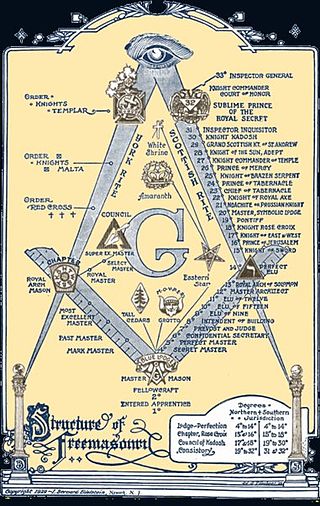
There are many organisations and orders which form part of the widespread fraternity of Freemasonry, each having its own structure and terminology. Collectively these may be referred to as Masonic bodies, Masonic orders, Concordant bodies or appendant bodies of Freemasonry.
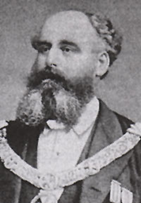
Dr. William Robert Woodman, was Supreme Magus of the S.R.I.A and one of three co-founders of the Hermetic Order of the Golden Dawn. Woodman was a medical doctor, horticultural expert and occultist. He was also a member of several metaphysical orders in England.

Robert William Felkin FRSE LRCSE LRCP was a medical missionary and explorer, a ceremonial magician, member of the S.R.I.A, member of the Hermetic Order of the Golden Dawn, a prolific author on Uganda and Central Africa, and early anthropologist, with an interest in ethno-medicine and tropical diseases.
Bishop Wilkins College No.58 is a Rosicrucian College of the SRIA meeting in Cheshire, within the Province of Western Counties and North Wales.
Robert Wentworth Little was a clerk and cashier of the secretary's office at the United Grand Lodge of England and later secretary of the Royal Institution for Girls. He was a well-known founder of Masonic orders in the 1860s and 70s, being responsible for four: the Societas Rosicruciana in Anglia (1867), the Red Cross of Constantine (1862), the Ancient Archeological Order of Druids (1874) and the Rite of Memphis-Misraim (1870). He is credited with the structural design of the S.R.I.A. with the rituals acquired from the store room of Freemasons Hall. He was also a founder of the Ancient and Primitive Rite of Misraim in England.
The Order of the Golden and Rosy Cross, was a German Rosicrucian organization founded in the 1750s by Freemason and alchemist Hermann Fictuld. Candidates were expected to be Master Masons in good standing. Alchemy was to be a central study for members. Much of the hierarchical structure for this order was used in Societas Rosicruciana in Anglia (SRIA) and from there, the Hermetic Order of the Golden Dawn.

Frederick Hockley was a British occultist and scryer who was a London-based Freemason and a member of the Societas Rosicruciana in Anglia.

Museum of Freemasonry, based at Freemasons’ Hall, London, is a fully accredited museum since 2009, with a designated outstanding collection of national importance since 2007 and registered charitable trust since 1996. The facility encompasses a museum, library, and archive.



